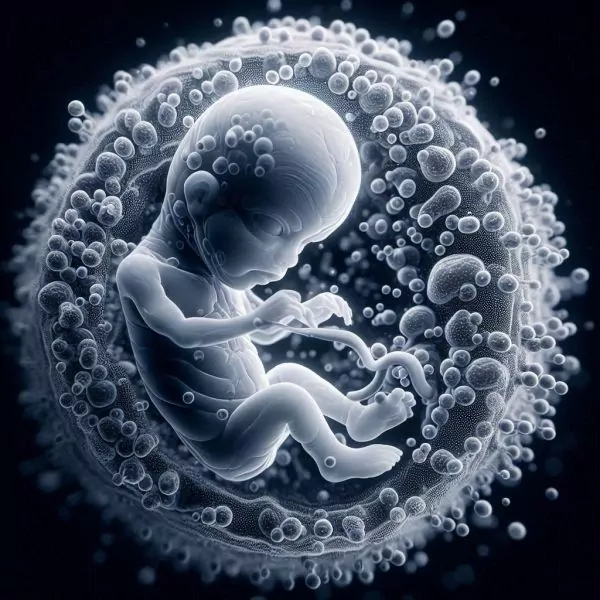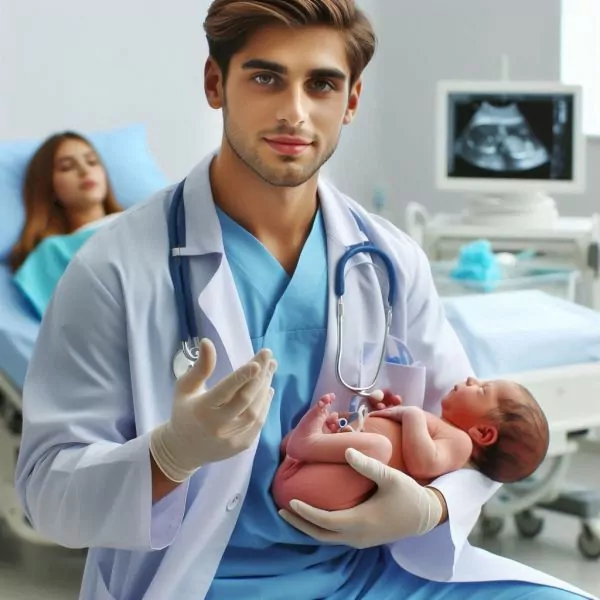
Let’s consider what we know about the processes of fertilization and child development: important facts for parents?
- 1 How does a baby come into being? The processes of fertilization.👶
- 2 Facts for parents: but does conception happen with every sexual act? 🤔
- 3 🌟 How does a baby develop in the mother’s womb? 🌟
- 4 How does the embryo breathe?
- 5 Important facts: what is a baby’s place?
- 6 How many children can a woman carry at the same time?
- 7 How does the baby leave the mother’s womb?
- 8 What comes out first during childbirth?
- 9 What does the midwife do?
- 10 What is a premature baby?
- 11 Why does a baby cry immediately after birth?
- 12 Why do babies spit up? 🍼💕
- 13 Why do babies suck their thumb?
- 14 Why can infants breathe and drink at the same time?
- 15 Why can newborns swim and dive?
How does a baby come into being? The processes of fertilization.👶
A baby is conceived when a man’s sperm enters a woman’s vagina during sexual intercourse. The sperm travels through the uterus to the fallopian tubes, where one of them merges with the egg. This is fertilization! 🌟 The fertilized egg then travels to the uterus, where it divides millions of times over 40 weeks as the baby grows.
Facts for parents: but does conception happen with every sexual act? 🤔
No! A woman can only become pregnant during a short period of her menstrual cycle. The cycle lasts about 14 days, and the egg is ready for fertilization for only 24 hours. However, live sperm can remain in a woman’s body for several days, so the chances of conception increase!
🌟 How does a baby develop in the mother’s womb? 🌟
The fertilized egg is just the beginning! 🥚 During cell division, the organs and tissues of the future person are formed.
👶 Key stages of development:
- 4th week: The heartbeat of the embryo can already be heard.
- 8th week: Bumps appear – the beginnings of legs and arms, and the face and neck are forming.
- 12th week: The size of the fetus reaches 7 cm.
- 16th week: The fetus weighs about 100 g, and reflexes are actively developing.
- 21-24 weeks: The embryo turns over, is able to hear, and hiccups.
- 25-28 weeks: It opens its eyes and can clench its fists.
- The last week before birth: The baby starts sucking its thumb, developing the sucking reflex.
This fascinating process is a true miracle that demonstrates how new life is formed from a tiny cell.
How does the embryo breathe?
Although the fetus makes breathing movements with its lungs, it cannot breathe air as it is submerged in amniotic fluid. 💧 The lungs are filled with fluid produced by epithelial cells. Gradually, the organs of the future person prepare for independent breathing. Oxygen reaches the embryo from the mother through the placenta, as blood supplies the most essential elements!
Important facts: what is a baby’s place?

The placenta, or “child’s place,” is a unique embryonic organ that develops alongside the baby in the mother’s womb. It performs several important functions:
- Nutrition: It provides the fetus with all the necessary nutrients.
- Breathing: It facilitates gas exchange between the mother and the fetus.
- Protection: It protects the fetus from pathogenic microorganisms.
- Excretion: It removes waste products from the fetus contained in the amniotic fluid.
The connection between the fetus and the mother’s body is established through the placenta via the umbilical cord. This organ is a true marvel of nature that supports the life and development of new life!
How many children can a woman carry at the same time?
Typically, a woman carries one child, which is called a singleton pregnancy. However, sometimes a woman may be expecting two or more children. This is called a multiple pregnancy. Cases where more than two children are born are very rare. For example, triplets occur only once in 7,225 births. While four children are even rarer, occurring once in 614,125 births.
How does the baby leave the mother’s womb?

There are two main ways a baby can enter the world.
- Natural childbirth: Most babies are born through the vagina, which is a natural process.
- Cesarean section: In some cases, when the baby is not in the correct position, a cesarean section is performed. During this operation, an incision is made in the mother’s abdominal wall. After is stitched up after the baby is born. Modern technologies allow this procedure to be performed with minimal complications.
Knowledge about these processes is important for future parents and medical professionals.
What comes out first during childbirth?
Usually, it’s the head! 👶 It is the largest and hardest part of the baby’s body. But sometimes babies are born buttocks first. Why is that?
During pregnancy, the fetus turns over many times: sometimes the head is down, sometimes the legs or buttocks. When the baby gets bigger, it becomes cramped, and not all of them manage to turn before delivery. 💫
What does the midwife do?

Midwives are true heroes! They support pregnant women, monitor the development of the baby, and assist in childbirth. The most important part of their work takes place in the delivery room, where new lives are brought into the world!
What is a premature baby?
Caring for premature babies: the importance of warmth and contact
Premature birth. When a baby is born three weeks early or weighs less than 2500 grams, poses a serious challenge to their health. These babies, known as premature, require special attention and support.
Modern medical technologies, including incubators, help care for premature babies. However, warmth and physical contact are critically important for their healthy development.
The “kangaroo mother” method is actively implemented in many clinics. Babies in stable condition are taken out of incubators and given the opportunity for their parents. This is skin-to-skin contact with them. This not only strengthens the bond but also positively impacts the child’s development.
Today, we can care for even the smallest babies, but the risks to their health remain high.
Why does a baby cry immediately after birth?
Upon entering the world, a baby begins to breathe using their own lungs. The first cry of a baby is simply an exhalation through a narrowed vocal cord. The infant’s lungs expand and fill with oxygen. Every mother and father is happy to hear their baby cry after birth, as it means the child is alive.
Why do babies spit up? 🍼💕
Spitting up is a natural process that occurs when air enters the stomach along with food. This can cause discomfort and a feeling of pressure.
💡 How to help the baby? After feeding, hold the baby upright and gently pat their back. This encourages spitting up and alleviates their discomfort.
Why do babies suck their thumb?
Most children start sucking their thumb while still in their mother’s womb. This is how they practice sucking. Some do it so diligently that they are born with a real callus on their thumb.
Sucking is an innate reflex that ensures nourishment from the mother’s milk.
That is why babies are called breastfed children.
Why can infants breathe and drink at the same time?
The reason for this is the structure of the epiglottis and larynx. The larynx in a newborn is short, wide, and positioned higher than in an adult. Therefore, the epiglottis (which is narrower than in adults) is located somewhat higher than the root of the tongue. During swallowing, liquid bypasses the epiglottis from the side. This structural feature allows infants to breathe and swallow simultaneously.
Why can newborns swim and dive?
Until about four months, babies have a special reflex known as the diving reflex. When a baby’s face comes into contact with water, nerves send a signal to a specific part of the throat that closes the airway. This helps prevent water from entering the lungs. When the face comes back above water. This mechanism turns off, and the baby can start breathing.
We have learned the basic processes of fertilization and child development: important facts for parents that will help in the future.